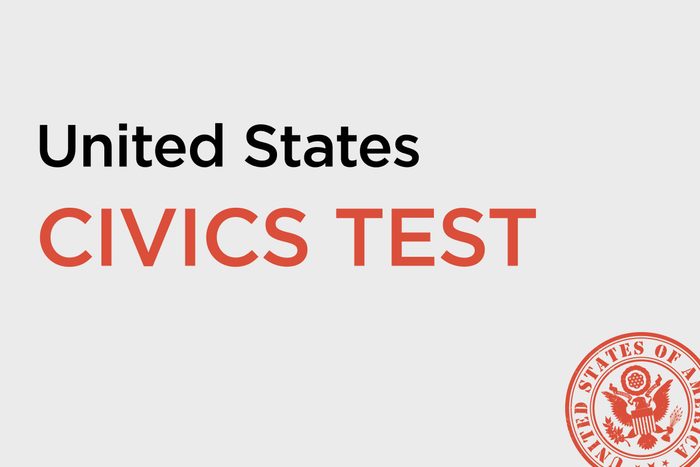
Here’s how the test works
The test (known as the “civics test”) is an oral exam during which a U.S. Citizenship and Immigration Service (USCIS) officer asks the test-taker ten questions from a list of 100 possible questions. A passing score is six out of ten.
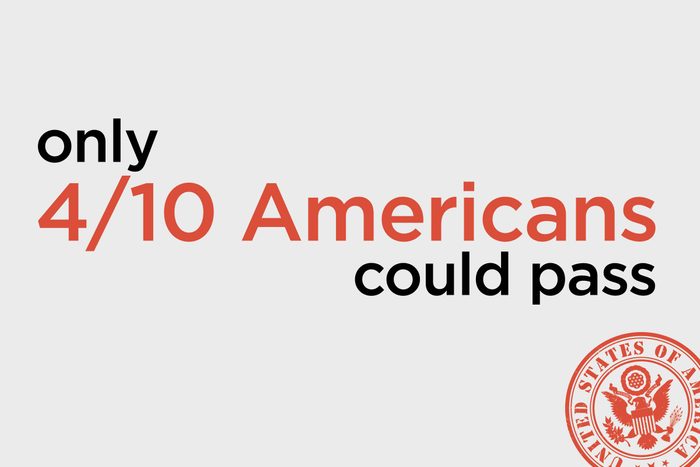
How American citizens fared
A recent survey of 41,000 Americans, conducted by the Woodrow Wilson National Fellowship Foundation, indicates less than four in ten Americans could pass the civics test. Some other notable facts from the survey: Those in Vermont had the highest passing rate (53 percent); the next four highest scoring states were Wyoming, South Dakota, Montana, and Virginia. Meanwhile, Louisiana had the lowest passing rate (27 percent), followed by Mississippi, Alabama, Arkansas, and Kentucky. Follow along to see the questions that had the most wrong answers (according to this survey and the one from last year).
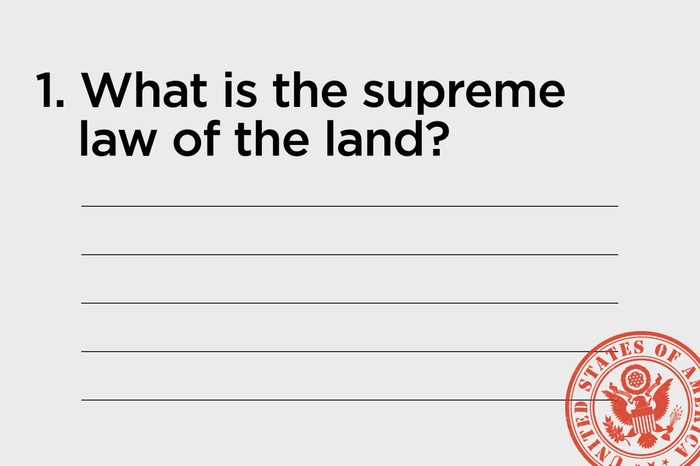
What is the supreme law of the land?
It doesn’t cover all laws, but this document for the citizenship test questions reigns supreme.
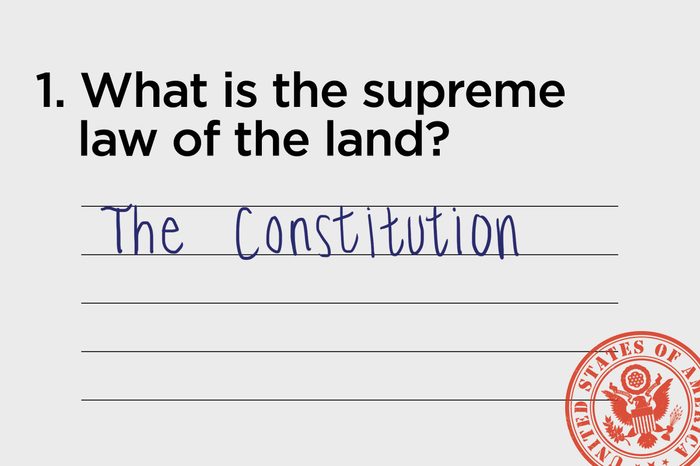
Answer: The Constitution
No state or local laws can go against the all-important federal document. Learn which 18 history lessons your teacher lied to you about.
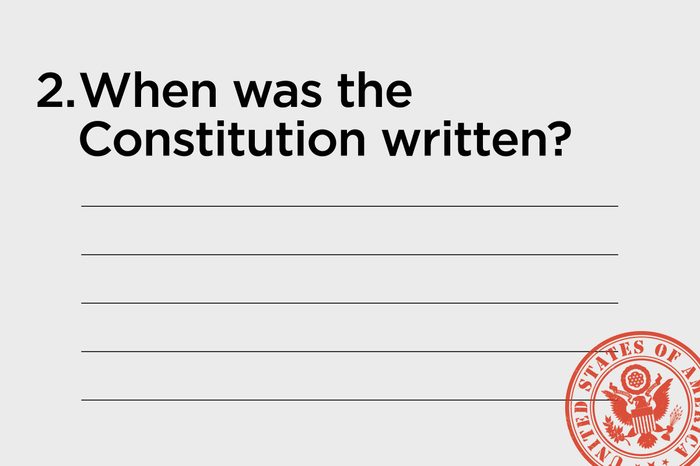
When was the Constitution written?
Hint: It wasn’t the same year as the Declaration of Independence. This citizenship test question stumps some.
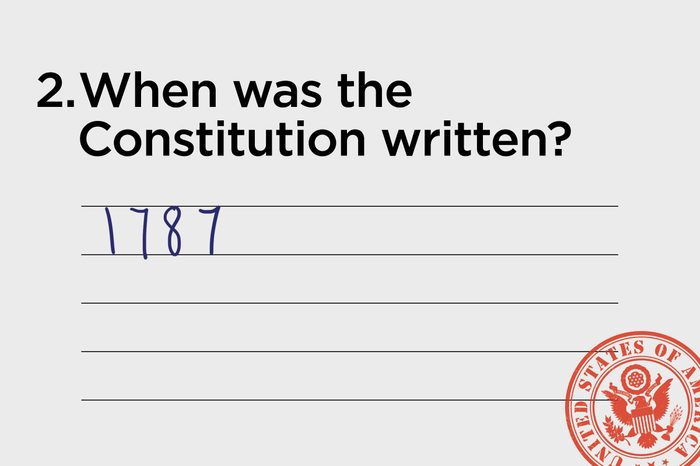
Answer: 1787
That’s right: More than a full decade passed after the United States declared its independence before delegates gathered for the Constitutional Convention.
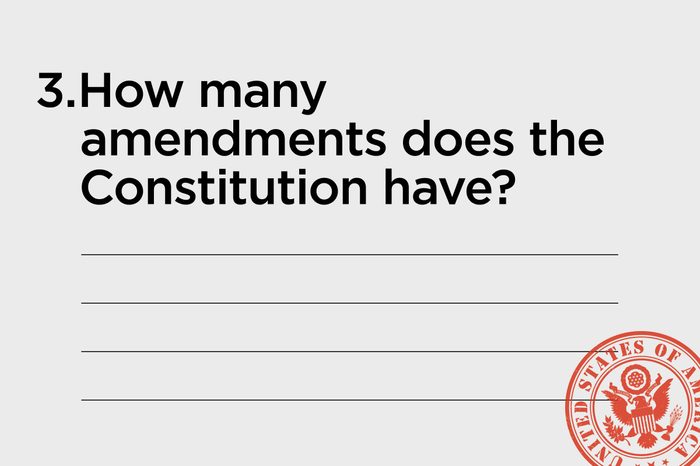
How many amendments does the Constitution have?
Can you guess how many times we’ve changed the Constitution, based on a two-thirds vote from both the House and the Senate?
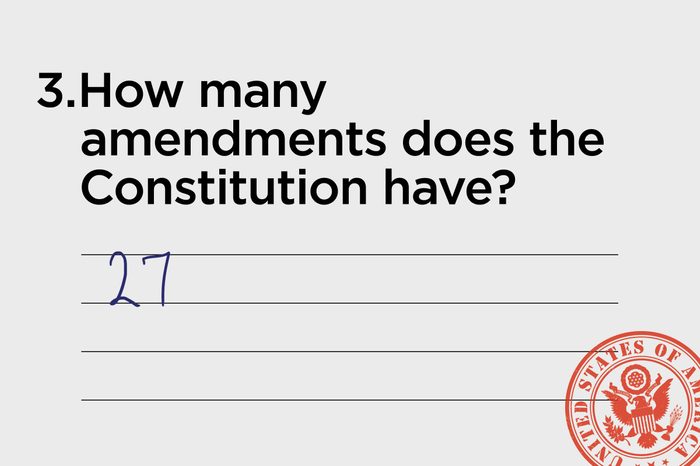
Answer: 27
The most recent revision, from 1992, reads: “No law, varying the compensation for the services of the Senators and Representatives, shall take effect, until an election of Representatives shall have intervened.” Here’s more U.S. trivia your history teacher never taught you.
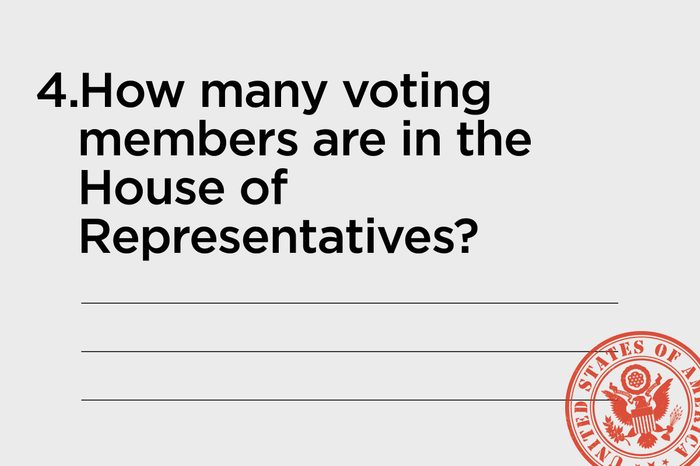
How many voting members are in the House of Representatives?
It’s not as simple as counting senators.
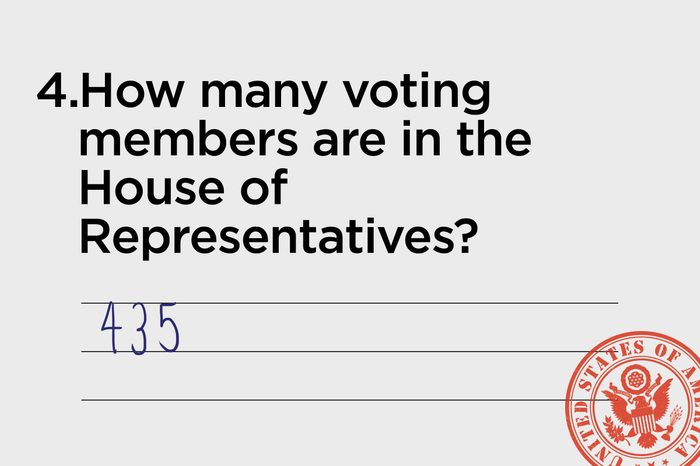
Answer: 435
Unlike the Senate, which has two members from each state, population determines how many representatives a state will get in the House. Right now it ranges from one (Alaska, Delaware, Montana, North Dakota, South Dakota, Vermont, and Wyoming) to fifty-three (California). The House also has five non-voting delegates from American Samoa, the Commonwealth of the Northern Mariana Islands, the District of Columbia, Guam, and the Virgin Islands, plus a resident commissioner from Puerto Rico.
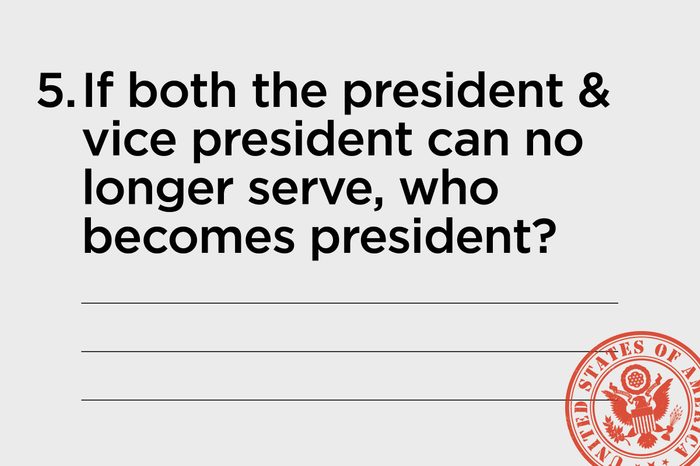
If both the president and vice president can no longer serve, who becomes president?
So far in U.S. history, no one from this position has needed to step up as president, but the law does have a plan just in case.
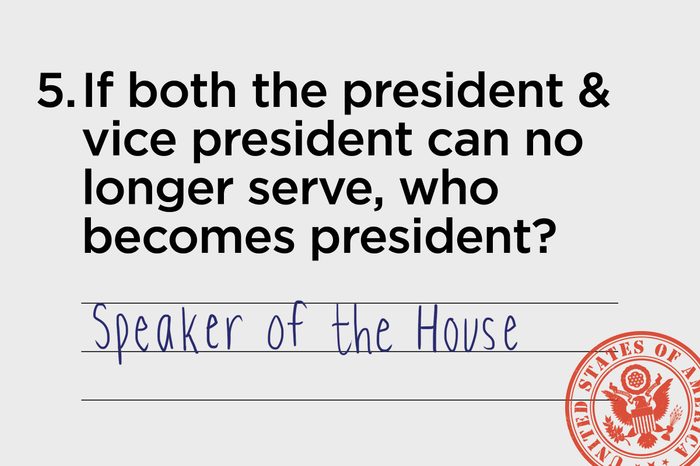
Answer: Speaker of the House
Right now, that would mean Nancy Pelosi (D-California).
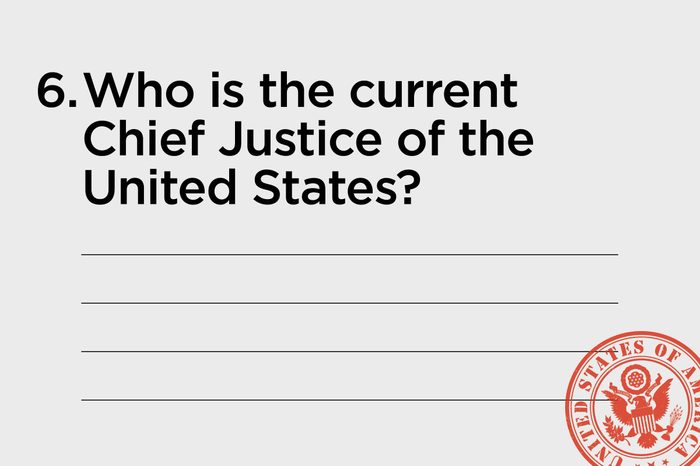
Who is the current Chief Justice of the United States?
This person serves on the Supreme Court.
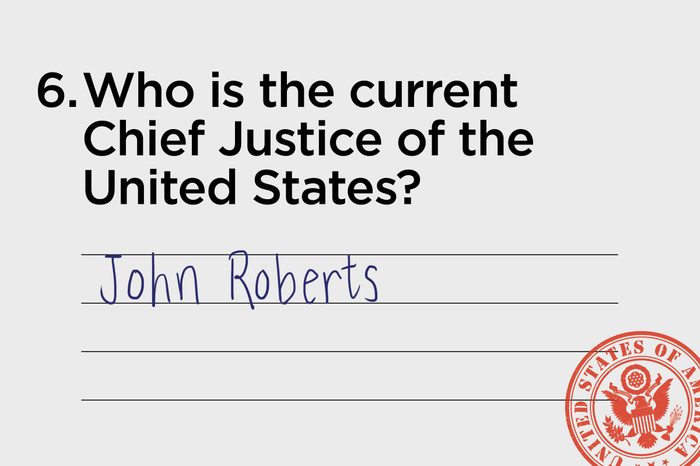
Answer: John Roberts
John G. Roberts, Jr. has had the position since 2005. Don’t miss these other 15 fascinating facts you never learned about America.
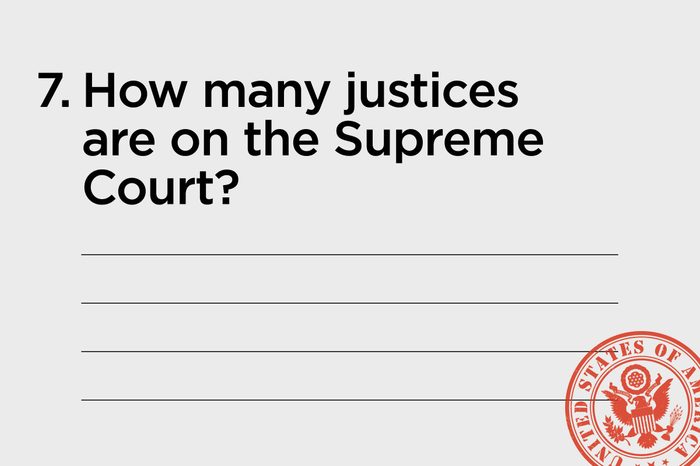
How many justices are on the Supreme Court?
Hint: It’s an odd number.
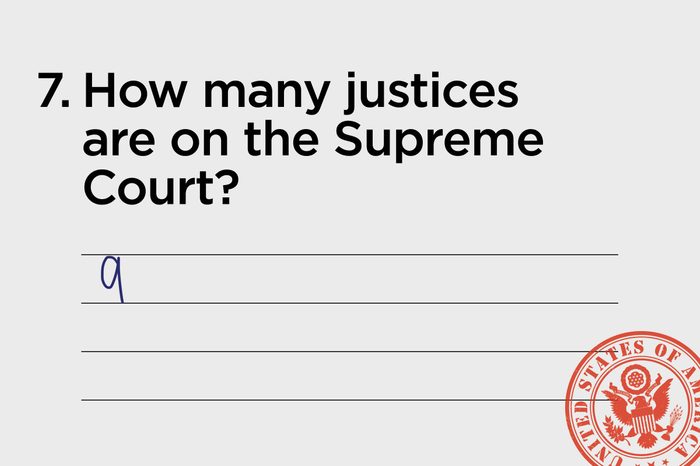
Answer: Nine
Luckily, you don’t have to worry about naming them! The current justices are John G. Roberts, Jr. (Chief Justice), Clarence Thomas, Ruth Bader Ginsburg, Stephen G. Breyer, Samuel A. Alito, Jr., Sonia Sotomayor, Elena Kagan, Neil M. Gorsuch, and Brett M. Kavanaugh.
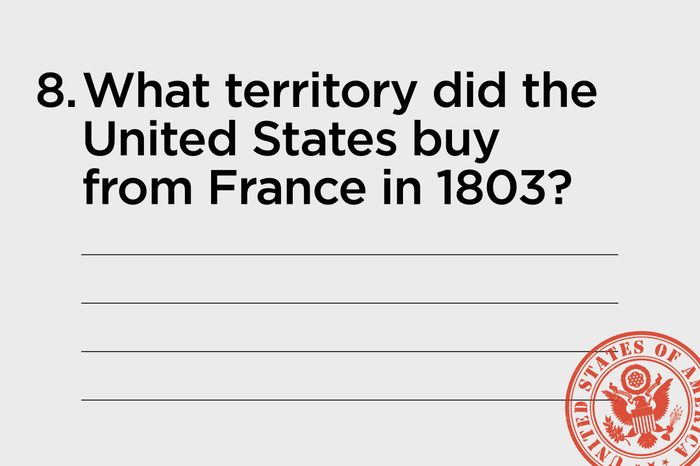
What territory did the United States buy from France in 1803?
Think beyond the 13 colonies.
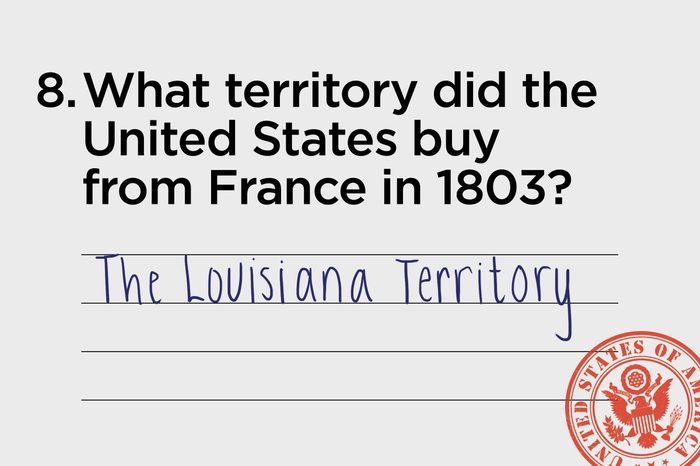
Answer: The Louisiana Territory
With the Louisiana Purchase, the United States doubled in size. The land didn’t just include modern-day Louisiana—15 states are at least partially included in the formerly French territory. Check out these other 50 astonishing facts you never knew about the 50 states.
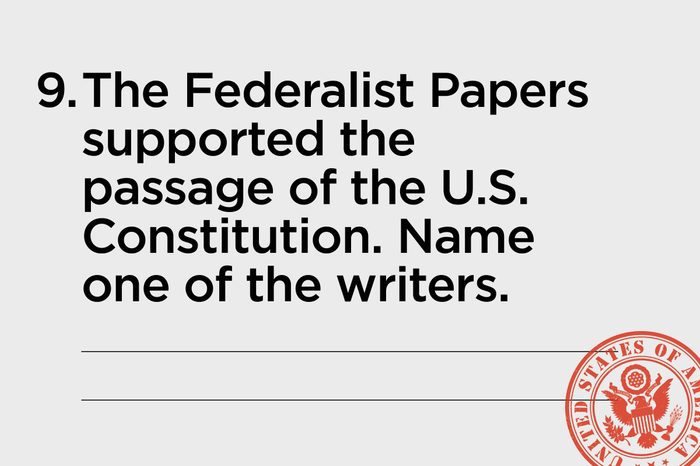
The Federalist Papers supported the passage of the U.S. Constitution. Name one of the writers.
Bonus points if you can name all three.
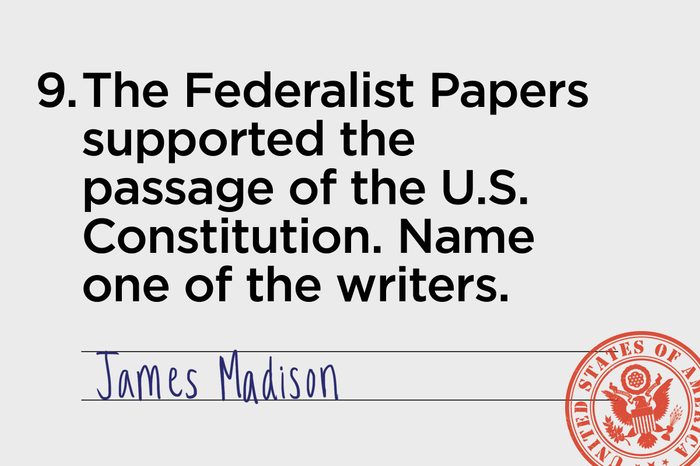
Answer: James Madison, Alexander Hamilton, John Jay
Surprise! Thomas Jefferson wasn’t there. The three writers signed with the pen name Publius, which is also an acceptable answer on the citizenship test. See if you can answer these U.S. presidential trivia questions everyone gets wrong.
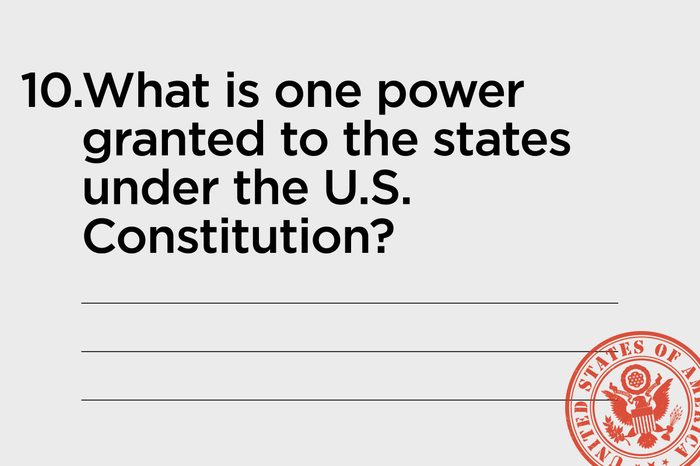
What is one power granted to the states under the U.S. Constitution?
The federal government can print money, declare war, create an army, and make treaties—so what’s left for the states?
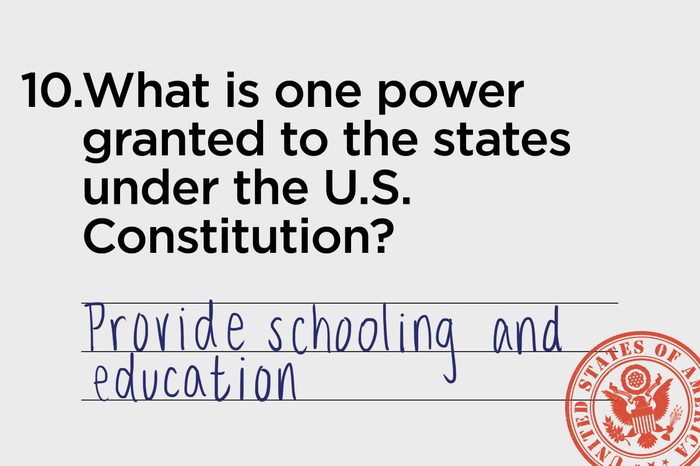
Answer: Provide schooling and education
Other options on the citizenship test answer key are: provide protection through police, provide safety through fire departments, grant driver’s licenses, and approve land use.
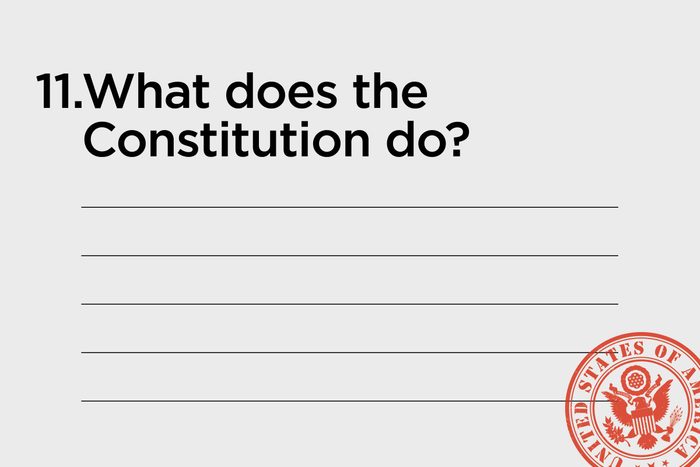
What does the Constitution do?
Other than sit in the National Archives, of course.
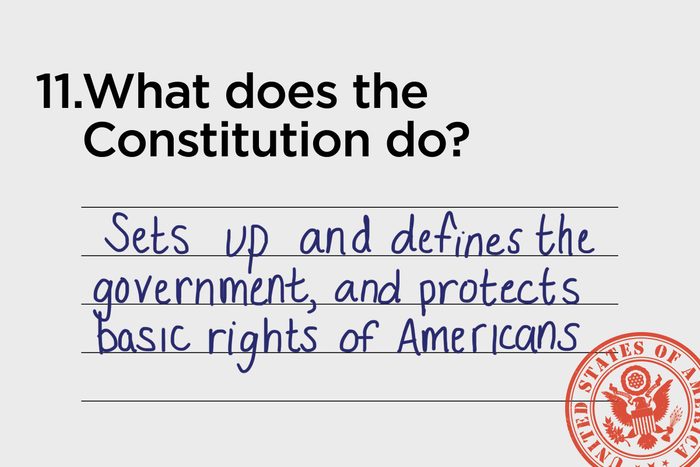
Answer: Sets up and defines the government, and protects basic rights of Americans
Great job if you got all three!
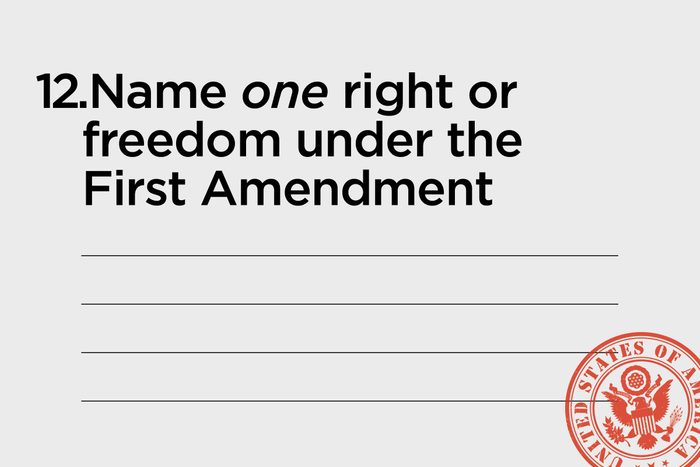
Name one right or freedom under the First Amendment
Hint: There are five total.
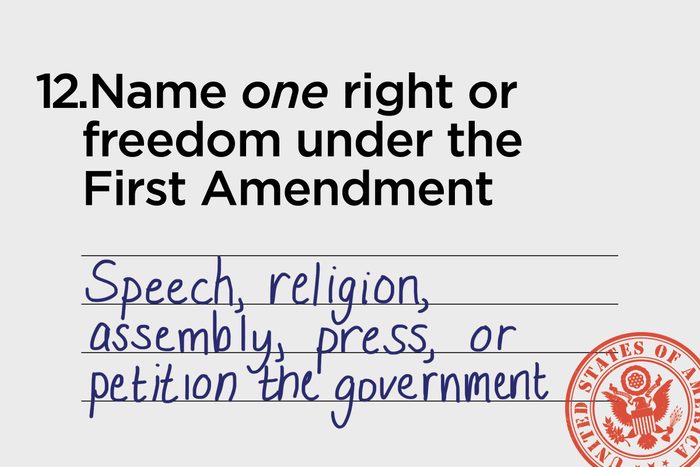
Answer: Speech, religion, assembly, press, or petition the government
A full 25 percent of those surveyed didn’t know that freedom of speech was one of them.
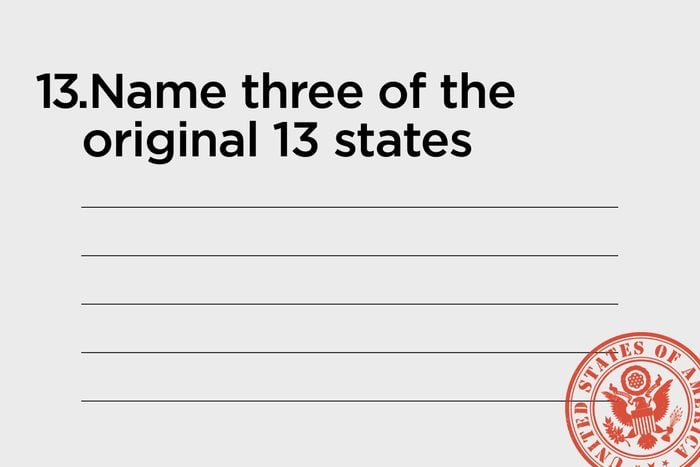
Name three of the original 13 states
They’re also called the 13 colonies.
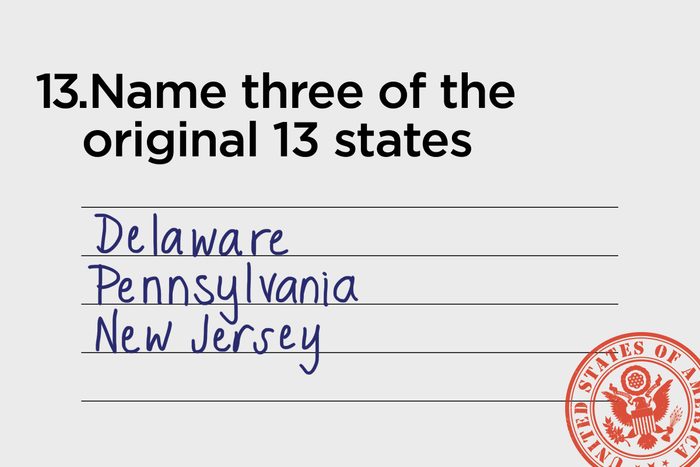
Answer: Delaware, Pennsylvania, New Jersey
Other options are Georgia, Connecticut, Massachusetts, Maryland, South Carolina, New Hampshire, Virginia, New York, North Carolina, and Rhode Island. Seventy-two percent of respondents either incorrectly identified or were unsure of which states were part of the 13 original states. Here are 24 U.S. state facts everyone gets wrong.
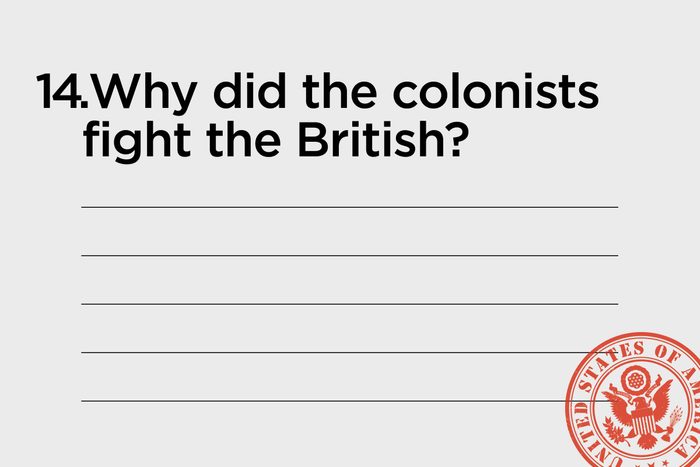
Why did the colonists fight the British?
There’s more than one answer.
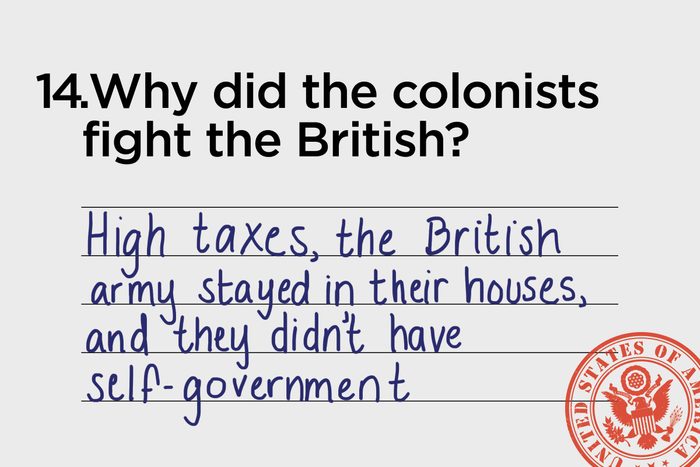
Answer: High taxes, the British army stayed in their houses, and they didn’t have self-government
Only 24 percent of Americans surveyed knew the correct answer was the following three reasons (all three are required for it to count as a right answer).
- because of high taxes (taxation without representation)
- because the British army stayed in their houses (boarding, quartering)
- because they didn’t have self-government
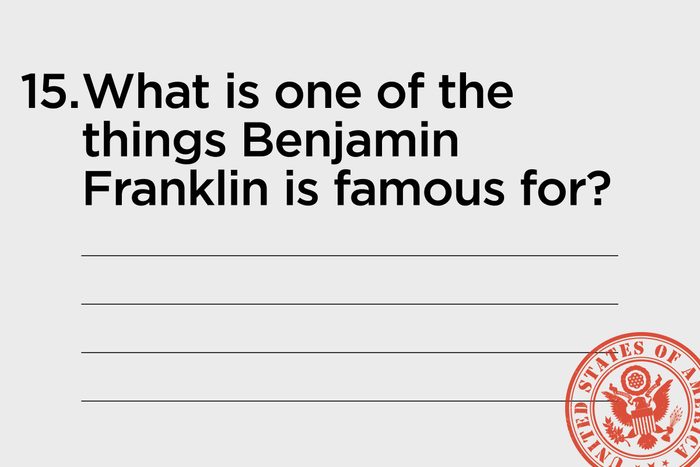
What is one of the things Benjamin Franklin is famous for?
Only 24 percent of Americans surveyed could correctly identify even one thing Benjamin Franklin was famous for, with 37 percent believing he invented the light bulb (that was actually Thomas Edison).
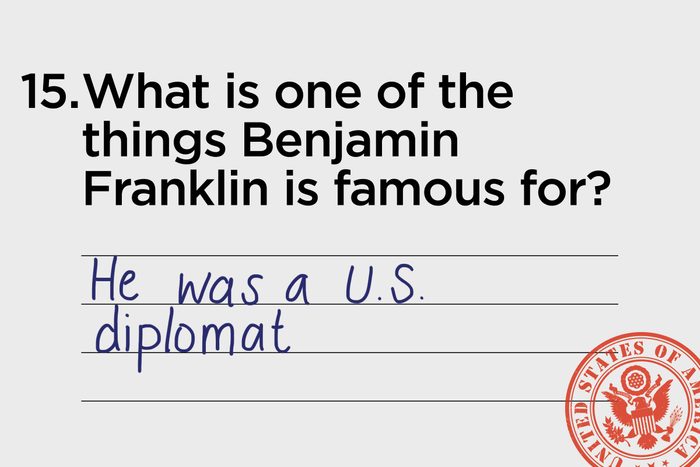
Answer: He was a U.S. diplomat
You also could have said that he was the oldest member of the Constitutional Convention, he was the first Postmaster General of the United States, he wrote Poor Richard’s Almanack, or he started the first free libraries.
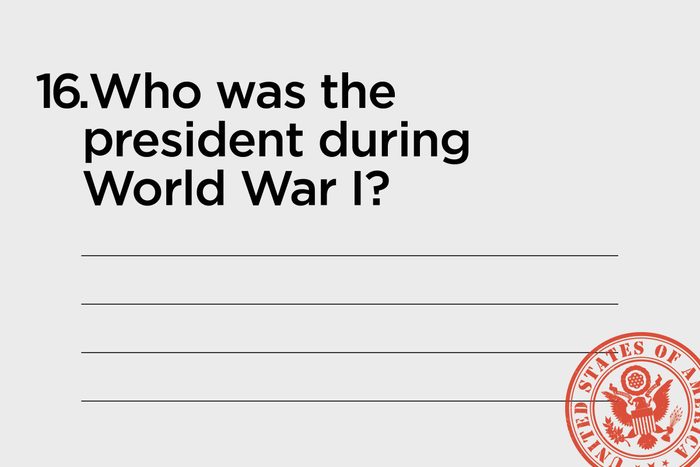
Who was the president during World War I?
Hint: World War I lasted 1914 to 1918.
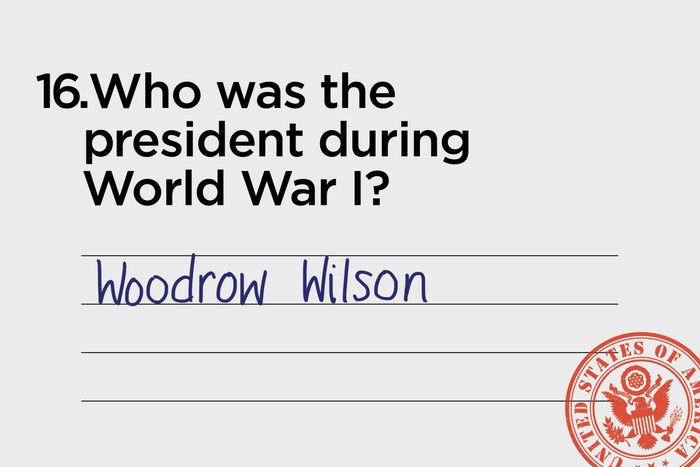
Answer: Woodrow Wilson
A full 57 percent of American citizens surveyed did not know that Woodrow Wilson was the president during World War I. Can you guess the middle name of every U.S. President?
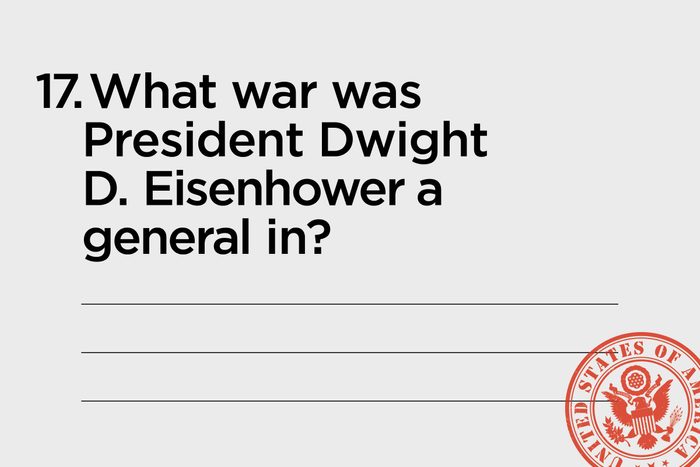
What war was President Dwight D. Eisenhower a general in?
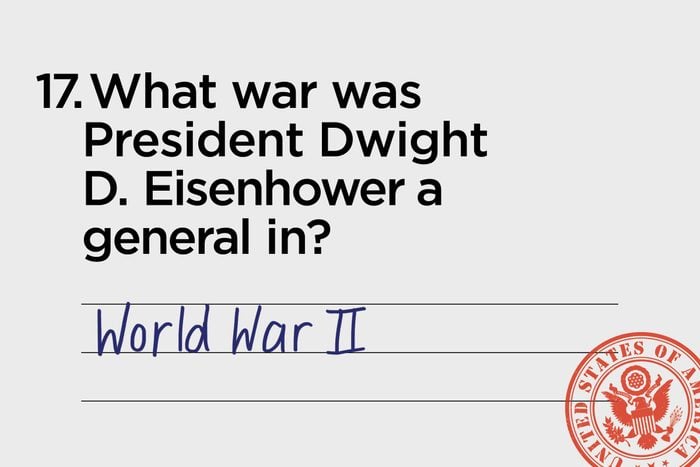
Answer: World War II
The correct answer is World War II, but a full 12 percent thought he led the troops in the Civil War. Another 6 percent thought he was a Vietnam War general.
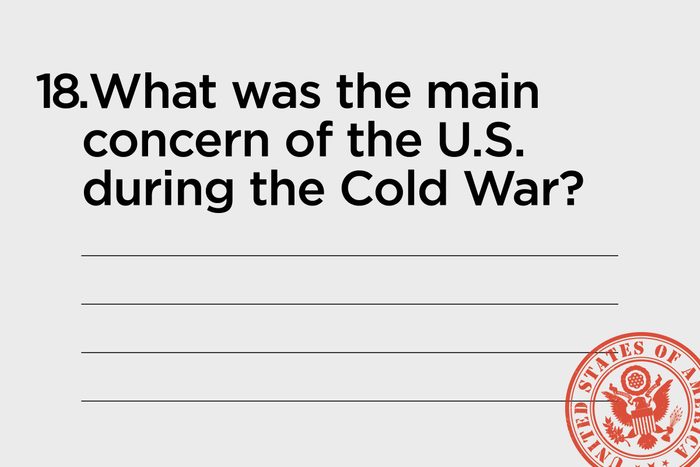
What was the main concern of the U.S. during the Cold War?
Tensions were high between the United States and the Soviet Union—but why?
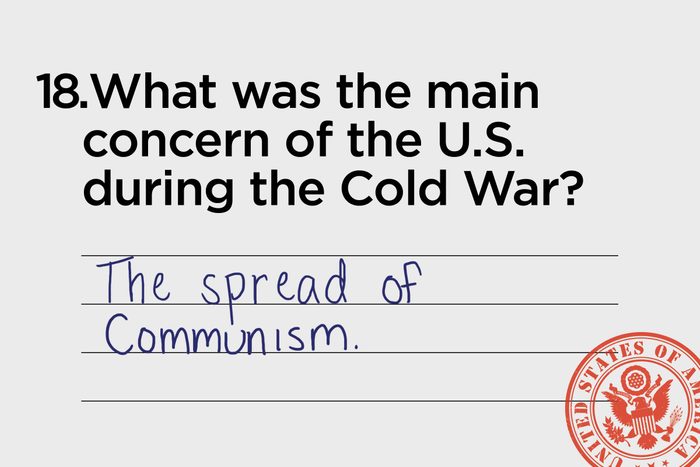
Answer: The spread of Communism
While many Americans surveyed knew the cause of the Cold War was America’s concerns regarding the spread of Communism, 2 percent actually thought the Cold War was about climate change. Next, test your knowledge of these 16 history questions everyone gets wrong.
[Source: U.S Citizenship and Immigration Services]
